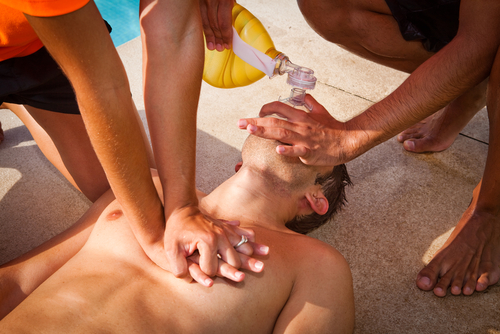
How to Effectively Prevent and Respond to Drowning
Drowning causes millions of death globally. In the US, about ten people die from drowning daily with drowning statistics rising around the summer period.
As an EMS professional, it is crucial to realize the correct preventative and restorative techniques, and have access to adequate biomedical equipment used for drowning.
Preventing Drowning
EMS professionals should help the public take safety measures when being around water. Here are some educational tips for the public:
- Be Open and Inventive
Parents and caretakers should be encouraged to seek swimming lessons for children. Too often, adults report that they are either poor swimmers or have no swimming experience.
- Pay Attention
Parents should be advised to keep pools clear of toys, especially when not in use. Never let kids use the pool unsupervised. Parents should also evaluate residential pools and ensure that there are pool enclosures to prevent children from accessing above and in-ground pools.
- Use the Right Resources
Parents should be encouraged to invest in the right equipment for swimming. Water wings and inflatable rafts are not safety equipment. U.S. Coast Guard Approved life jackets are critical safety equipment that shouldn’t be overlooked for those who aren’t strong swimmers.
- Never Underestimate the Ocean
People who use the beach and ocean should pay attention to lifeguards and always check for riptide. If they are caught in one, they shouldn’t swim to the shore but swim parallel to the beach to get out of it. Beachgoers should always be on the lookout for sneaker waves since they appear without warning.
- Leave the Rescue to the Professionals
Encourage people never to attempt the rescue of a victim who is drowning. Without proper training or capabilities, they may become seriously injured or killed.
How to Respond to Drowning Situations
Currently, the AHA has developed updated measures for drowning treatments. Here are a few:
- If patients need any form of resuscitation, they should be taken to the emergency department for further assessment.
- Ventilation should be given to drowning victims in cardiac arrest as soon as possible, chest compressions and defibrillation should follow this.
- Because spinal injuries can occur after drowning, avoid spending too much time to immobilize patients.
- ACLS interventions should only be performed after gaining clarity that the patient is not experiencing severe hypothermia after a cold water drowning.
- Get ready to move the patient to a lateral recumbent position alongside the suctions to administer proper care quickly should patient vomit after drowning, which is a common occurrence.
By teaching others about these preventive techniques, drowning can be avoided. Also, swift emergency techniques and nearby biomedical equipment, as listed in this article, can help prevent loss of life or life-threatening conditions post-drowning.





